Mission Summary
Updated: 2021-03-27 07:18:54
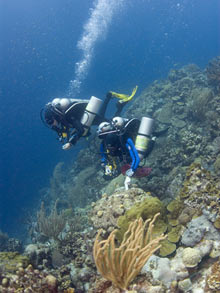 Chief Scientist Mark Patterson provides a mission summary, highlighting why they decided to come to Bonaire's pristine environment for scientific research and why they are seeing some troubling factors regarding the health of the coral reefs.
Chief Scientist Mark Patterson provides a mission summary, highlighting why they decided to come to Bonaire's pristine environment for scientific research and why they are seeing some troubling factors regarding the health of the coral reefs.
 The mission receives invaluable help from Ramón de Leon and Frank van Slobbe, from the government of Bonaire.
The mission receives invaluable help from Ramón de Leon and Frank van Slobbe, from the government of Bonaire.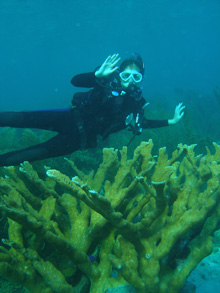 The science team prepares to scout out the island and the reefs of Bonaire and learn why they always have to be ready to improvise and adapt.
The science team prepares to scout out the island and the reefs of Bonaire and learn why they always have to be ready to improvise and adapt.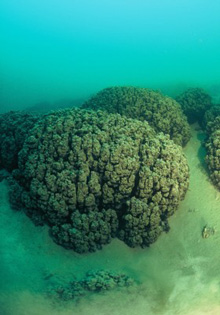 The team overcame the challenge of mapping underwater 'microbialites' - calcium carbonate mounds that result from the presence of a microbial community.
The team overcame the challenge of mapping underwater 'microbialites' - calcium carbonate mounds that result from the presence of a microbial community.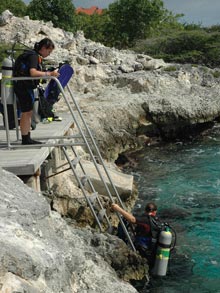 How is this Bonaire 2008 Exploration different from many of Ocean Explorer's other expeditions you may ask?
How is this Bonaire 2008 Exploration different from many of Ocean Explorer's other expeditions you may ask?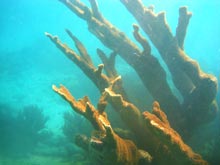 Acropora palmate (Elkhorn coral), once prevalent around the island’s leeward coast, can only be found in a few areas and then in only small patches.
Acropora palmate (Elkhorn coral), once prevalent around the island’s leeward coast, can only be found in a few areas and then in only small patches.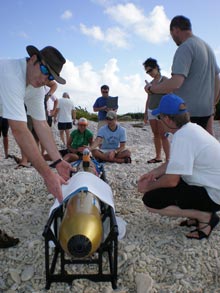 Sixteen students, mostly upperclassmen pursuing degrees in biology, geology and environmental sciences, have come to Bonaire through the University of Delaware’s Caribbean Study Abroad Program.
Sixteen students, mostly upperclassmen pursuing degrees in biology, geology and environmental sciences, have come to Bonaire through the University of Delaware’s Caribbean Study Abroad Program.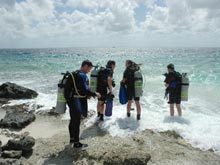 Learn why the scientific dive team is navigating by GPS along a predetermined heading conducting video transects of coral cover.
Learn why the scientific dive team is navigating by GPS along a predetermined heading conducting video transects of coral cover.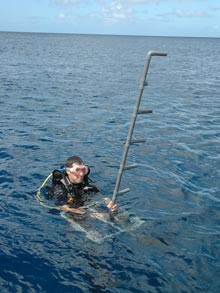 The survey data collected by the GeoSwath sonar on the Gavia AUV provides a high-resolution side-scan sonar mosaic.
The survey data collected by the GeoSwath sonar on the Gavia AUV provides a high-resolution side-scan sonar mosaic.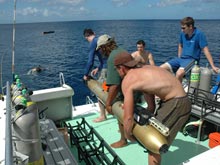 The bathymetric sonar onboard the Gavia AUV provides an incredibly dense map of the reef structure including the overhanging coral on the crest of the reef. Includes Video
The bathymetric sonar onboard the Gavia AUV provides an incredibly dense map of the reef structure including the overhanging coral on the crest of the reef. Includes Video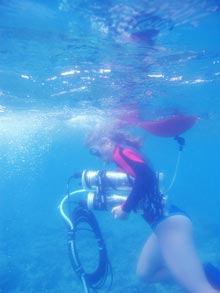 Deploying the 165-foot-long BOA temperature array of sensors with data loggers and heavy concrete anchors was quite a project.
Deploying the 165-foot-long BOA temperature array of sensors with data loggers and heavy concrete anchors was quite a project.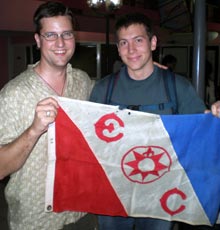 A recent inductee in the Explorers Club of New York is carrying a flag that has been on expeditions since 1934.
A recent inductee in the Explorers Club of New York is carrying a flag that has been on expeditions since 1934.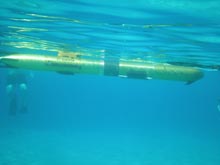 Students from the University of Delaware got their feet wet as they helped launch the Gavia AUVs.
Students from the University of Delaware got their feet wet as they helped launch the Gavia AUVs.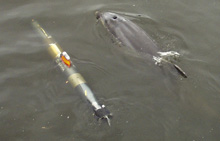 This 2008 expedition will begin in the Bonaire, Netherlands Antilles arguably the most pristine coral reef environment in the Caribbean. The goal of the Bonaire expedition is to survey this unique environment over a greater depth range than can be reached with compressed air SCUBA, using 3 Autonomous Underwater Vehicles (AUVs), technical diving, and in a future year, a manned submersible.
This 2008 expedition will begin in the Bonaire, Netherlands Antilles arguably the most pristine coral reef environment in the Caribbean. The goal of the Bonaire expedition is to survey this unique environment over a greater depth range than can be reached with compressed air SCUBA, using 3 Autonomous Underwater Vehicles (AUVs), technical diving, and in a future year, a manned submersible.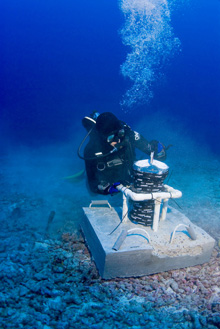 Coral reefs are often thought of as 'ecological oxymorons'. They harbor some of the greatest biodiversity on Earth, yet they develop in extremely nutrient-poor tropical waters. Reef-building corals represent ancient lineages that have evolved slowly over tens to hundreds of millions of years, yet the massive living reef structures we observe right now are geologically young features, often only a few thousand years old. And, the massive, robust calcified corals that build the reef framework are themselves quite fragile and sensitive to a host of natural and manmade disturbances and degradation.
Coral reefs are often thought of as 'ecological oxymorons'. They harbor some of the greatest biodiversity on Earth, yet they develop in extremely nutrient-poor tropical waters. Reef-building corals represent ancient lineages that have evolved slowly over tens to hundreds of millions of years, yet the massive living reef structures we observe right now are geologically young features, often only a few thousand years old. And, the massive, robust calcified corals that build the reef framework are themselves quite fragile and sensitive to a host of natural and manmade disturbances and degradation.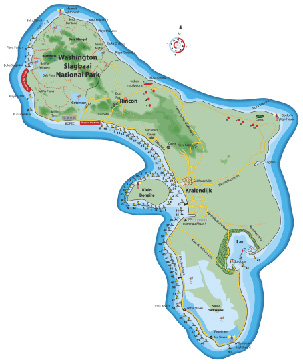 As a Marine Protected Area (MPA) Bonaire sets an important precedent regarding marine protection policy. Coral reefs offer a critical habitat in the marine environment, rivaled in biodiversity only by terrestrial rainforests. According to the National Center for Ecological Analysis and Synthesis at the University of California at Santa Barbara, coral reefs make up about 1% of the world's oceans, but they house nearly 25% of life in the ocean.
As a Marine Protected Area (MPA) Bonaire sets an important precedent regarding marine protection policy. Coral reefs offer a critical habitat in the marine environment, rivaled in biodiversity only by terrestrial rainforests. According to the National Center for Ecological Analysis and Synthesis at the University of California at Santa Barbara, coral reefs make up about 1% of the world's oceans, but they house nearly 25% of life in the ocean.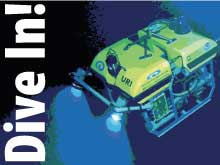 Ocean Explorer Expedition Education Modules (EEM) are designed to reach out in new ways to teachers, students, and the general public, and share the excitement of daily at-sea discoveries and the science behind NOAA’s major ocean exploration initiatives with the people around the world.
Ocean Explorer Expedition Education Modules (EEM) are designed to reach out in new ways to teachers, students, and the general public, and share the excitement of daily at-sea discoveries and the science behind NOAA’s major ocean exploration initiatives with the people around the world.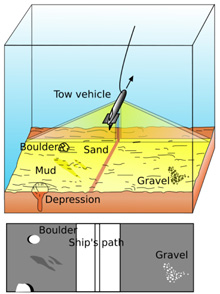 An Autonomous Underwater Vehicle (AUV), is a true robot able to move on its own without a pilot or tether to either ship or submersible. Designed to perform a predetermined set of maneuvers, take photographs, map, and collect data and samples. Discover why this technology is essential to scientist.
An Autonomous Underwater Vehicle (AUV), is a true robot able to move on its own without a pilot or tether to either ship or submersible. Designed to perform a predetermined set of maneuvers, take photographs, map, and collect data and samples. Discover why this technology is essential to scientist.